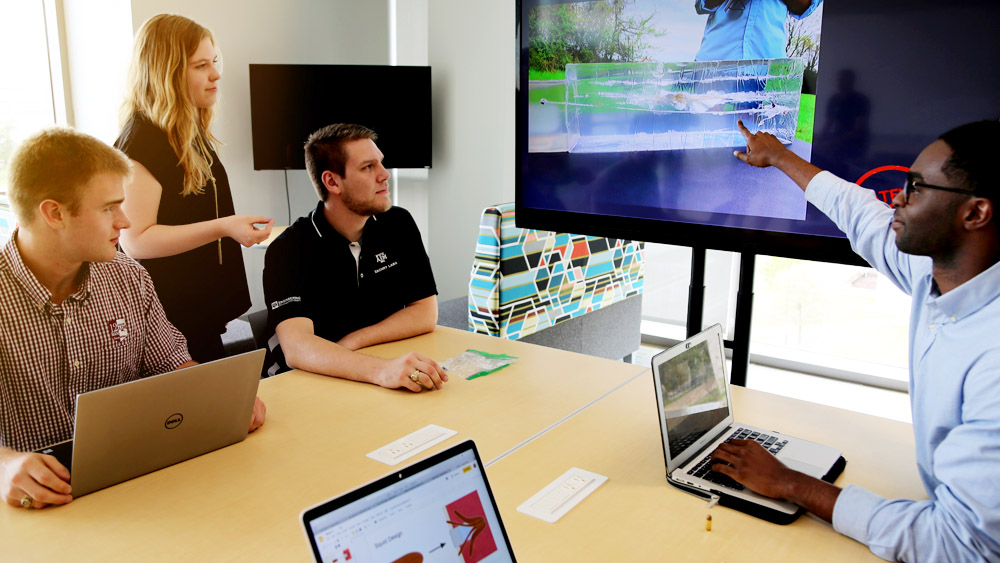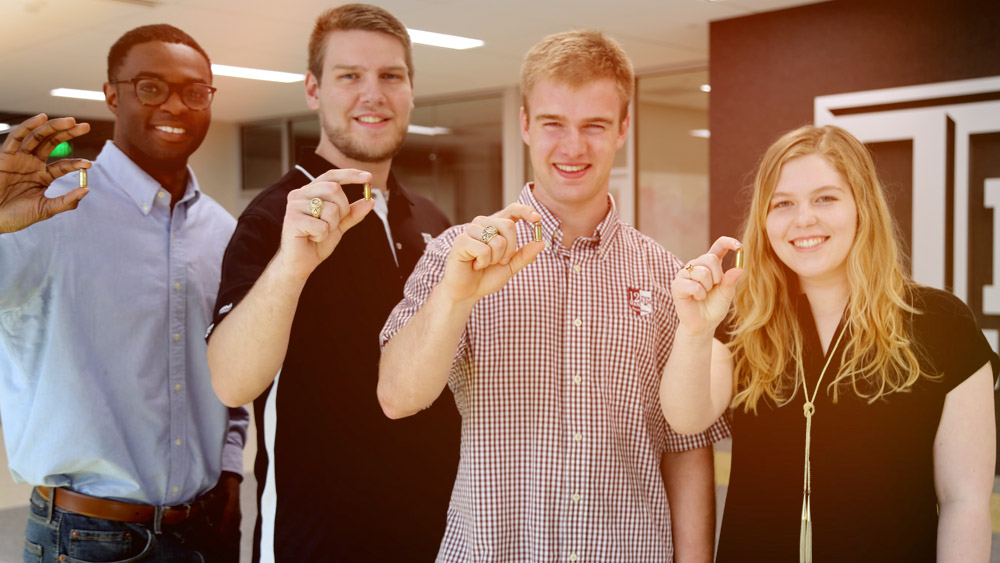Circumstance and chance play a huge role in invention and innovation. In the case of the Texas A&M University team behind Lazarus, ammunition that penetrates and neutralizes threats without loss of life, so much of the product’s early conceptualization was serendipitous.
Ben Omonira, a junior chemical engineering student and member of the Zachry Leadership Program, met Elise Hackney, mechanical engineering junior, outside of an elective engineering course they both arrived to early one day during their freshman year. They began discussing Omonira’s idea for a bullet that could help avoid situations like 2016 ambush and shooting on Dallas police officers, and the current obstacles they would face. Hackney enjoyed product design and CAD, and offered to help create a model. Fast forward two work-filled years of trial, error, improvement, competitions and the Engineering Incubator, and you have an incredible student-creation that is shooting to the top in its field.
Omonira is not your average student. He was born in the U.K., raised in Dallas, and he had this quirky commitment to writing down 10 ideas a day in his “book of bright ideas.” Not the easiest hobby, he’ll tell you, but it seems to have paid off with Lazarus.

“Whenever the shooting happened, we were just really shocked that this occurred where we were living,” said Omonira. “I saw then that there is a problem with lethality in our nation. I had just finished watching a “TED Talk” about hydrogels they put in medicines. While watching the news coverage of this ambush, my brother changed the channel to “Agents of Shield” and was pointing out this gun that put people to sleep. The idea triangulated then. What if there was a way to create biocompatible ammunition that neutralizes the threat but could preserve life and buy time?”
The goal of Lazarus ammunition is to neutralize a threat but preserve life. The innovation lies in the design and the materials used that stop blood loss, hemostatic materials inside capable of clotting the wound cavity.
We’re providing another degree of lethality or force in comparison to current nonlethals that exist. They don’t penetrate the body and most times are not effective in neutralizing, especially in life-threatening situations. So, we’re trying to bridge the gap by still providing a way to incapacitate like a normal round, but removing that loss of life.
Why should we care?
Lazarus is the opportunity the nation has been demanding for several situations that could have gone more favorably. In situations where the guilty party is ambiguous, a Lazarus bullet could have helped clear that up by providing the opportunity to gain further information from an assailant. By using normal ammunition as the neutralizing force, the opportunity to gain further information may not be available.
Another situation with regular rounds to consider is the cost, from emotional trauma to time and resources, after a member of law enforcement uses deadly force. If the Lazarus bullet were an option right now, it would likely be much smaller.
The market for this innovation is vast. Beyond the obvious local law enforcement agencies, there is even an application for the military and intelligence agencies. Not only could it be used to help in situations requiring further investigation for information, but also for minimizing death on the battle field.
When someone is injured in battle this creates a liability. Two fellow soldiers support one injured soldier, meaning three soldiers are now incapacitated nonlethally, rather than simply killing one soldier.

The journey to a winning invention
Where Lazarus is today wasn’t without help and guidance through multiple courses, competitions and organizations on campus, not to mention the efforts of the team. Through the Engineering Entrepreneurship Program, Omonira and Hackney took the Product Lean Launch for Engineers course, where they went through a rough business plan, learned competitive advantages and market analysis.
After that, they enrolled in the Engineering Inc. program and began doing customer interviews with local law enforcement, participated (and won) in the Engineering Project Showcase, and developed and tested prototypes.
“The thing that I love about this team is that they are very passionate about this,” said Jim Donnell, professor of practice and program coordinator of Engineering Inc. “They are willing to be mentored, tutored and taught and their success shows it. I’ve pushed back hard on them, presented them with many challenges, and they never give up. They aren’t afraid to scale the wall of challenges.”
Over their journey, they’ve hit some impressive milestones. They won first place at the Retailing Summit Conference in 2018 through the Texas A&M Mays Business School and they presented to Gen. John Murray who was visiting campus with the Army Futures Command. In order to produce a functioning prototype for testing, they expanded their team to include Nathan Panak, a full-time staff employee in the SuSu and Mark A. Fischer '72 Engineering Design Center, and Seth Reine, junior biomedical engineering student. Their venture was accepted to the 2019 LaunchPad Lift Cohort through the McFerrin Center for Entrepreneurship, and more recently, they placed third in the Raymond Ideas Challenge and took fourth place in Aggie Pitch.